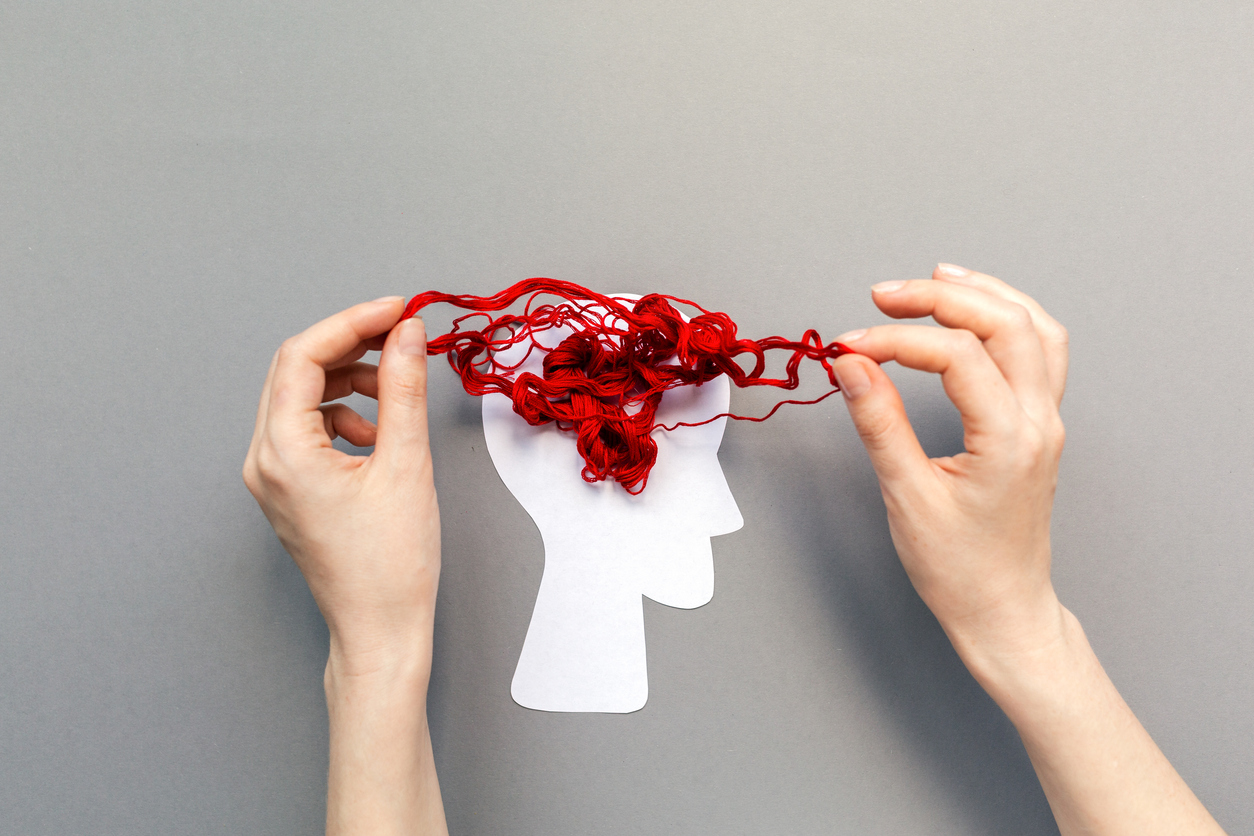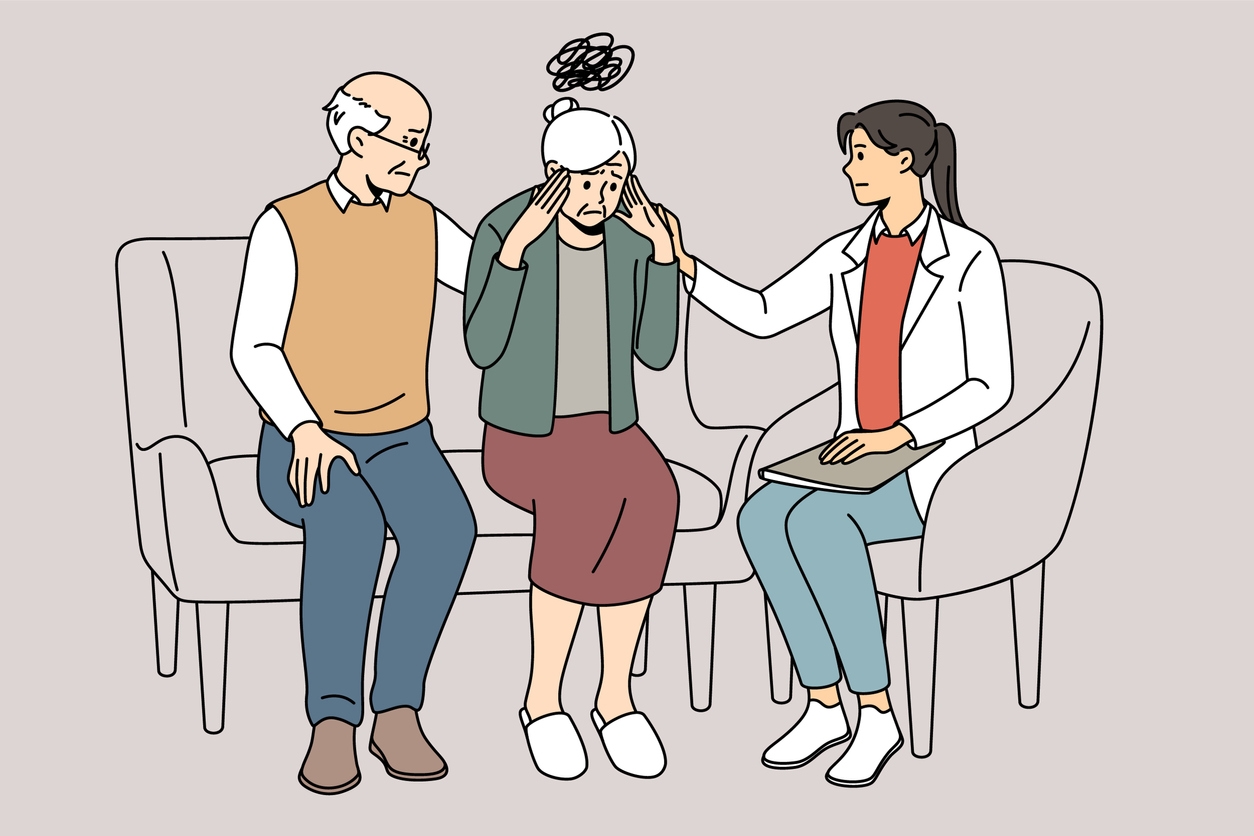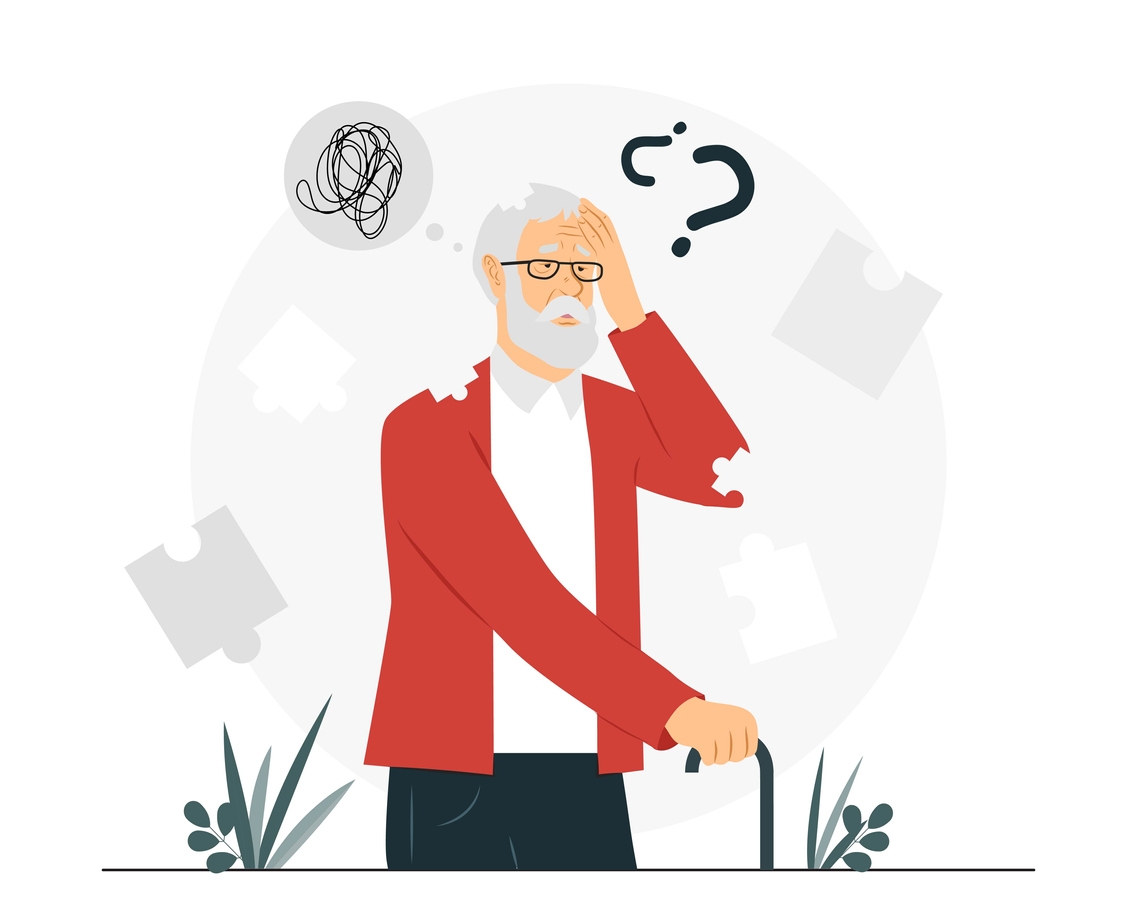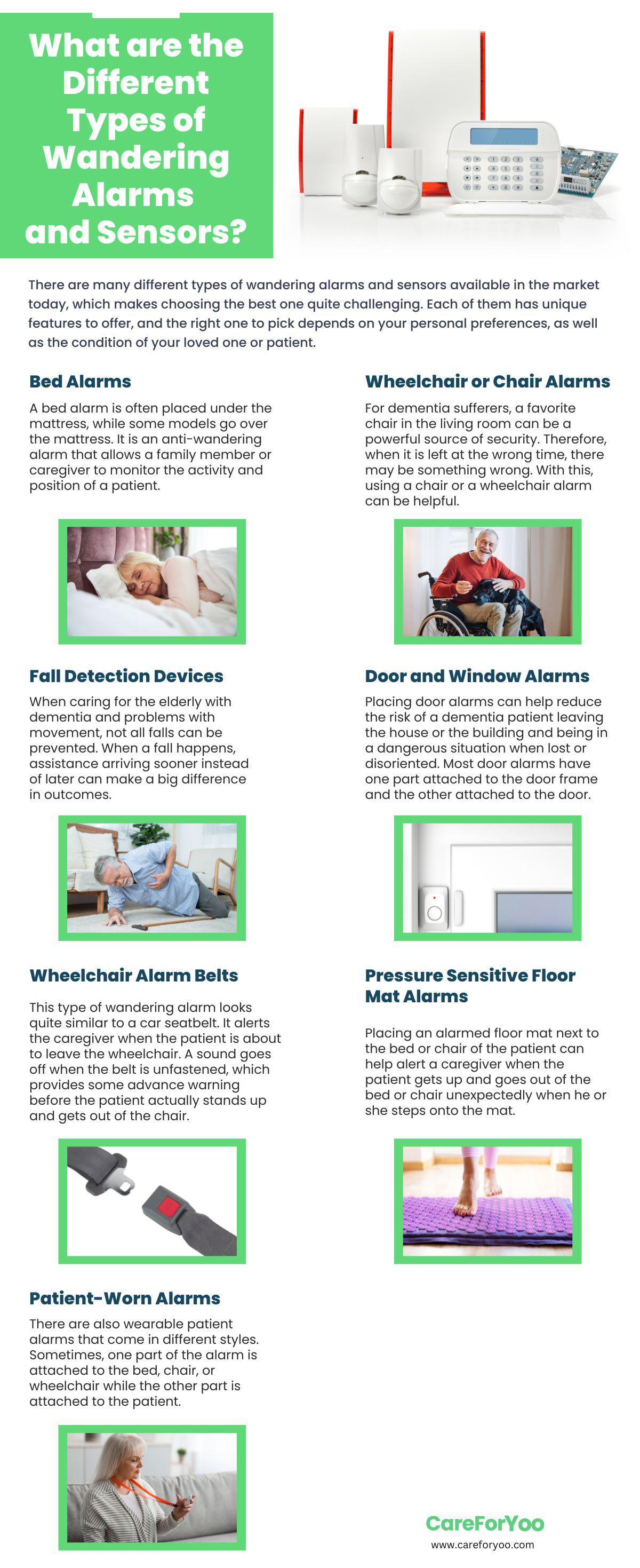If you know someone with dementia, you might wonder if you can get it or what other types of dementia there are. Dementia is a progressive neurological disorder that affects millions of people worldwide. It is a debilitating condition that can lead to significant cognitive decline, memory loss, and changes in behavior and personality. While Alzheimer’s disease is the most common form, there are many different types that have unique symptoms and characteristics.
What is Dementia?

Dementia is a general term used to describe a group of symptoms that affect memory, thinking, behavior, and social abilities to the point of interfering with daily life. It does not refer to a specific disease but rather a collection of symptoms that various underlying conditions or diseases can cause. Though dementia usually involves memory loss, memory loss itself has different causes. Experiencing memory loss alone doesn’t mean you already have dementia, but it’s often one of the early signs of this condition.
Dementia can affect a person’s ability to communicate, reason, and perform everyday tasks, and it can also cause changes in mood, personality, and behavior. It can be frightening and stressful for both the person with dementia and the people who love them. Unfortunately, dementia typically worsens over time and is non-reversible, but an early diagnosis can help give the people affected more time to make plans for patient care.
The severity and progression of dementia can vary, depending on the underlying cause. Treatment options for dementia also vary on the underlying cause but may include medication, therapy, and lifestyle changes.
Common Types of Dementia

There are more than 400 types of dementia. While dementia itself isn’t a disease, there are some diseases that cause it. Sometimes, different types of dementia can be experienced by a person simultaneously, and when this happens, it’s called mixed dementia.
Most people diagnosed with dementia have one of the four common types of the disease: Alzheimer’s disease, vascular dementia, frontotemporal dementia, and dementia with Lewy bodies.
1. Alzheimer’s disease
This is the most common type of dementia, accounting for 60-80% of cases. It is caused by the speeding-up of the brain’s normal aging process. It is a degenerative condition with symptoms that become more severe over time. Patients with Alzheimer’s have noticeable symptoms such as memory loss, trouble planning, and doing normal, familiar tasks. Symptoms may be mild at first, but they can get worse over the years, including:
- Confusion over where they are, what day, or what year it is
- Problems with speaking and righting
- Poor judgment
- Mood and personality changes
- Losing things and being unable to backtrack them
Not all the causes of Alzheimer’s disease are known, but some factors can increase a person’s likelihood of developing it, including cardiovascular disease and genes. A small percentage is related to mutations of three genes, which can be passed down from parent to child. One notable gene that increases risk is the apolipoprotein E4 (APOE)
Patients with Alzheimer’s disease have a buildup of amyloid plaques and tau protein tangles in their brains. It is thought that these damages the healthy neurons and the fibers that connect them.
2. Vascular dementia
The second most common type of dementia is vascular dementia. This type of dementia is caused by damage to the blood vessels that supply oxygen and nutrients to the brain, leading to reduced brain activity. It is usually caused by a stroke or a series of small strokes.
The most common symptom of vascular dementia is a significant slowness in thought, which also worsens as time passes. It usually begins with poor judgment, and trouble planning, organizing, and making decisions. This is more noticeable than memory loss. Other symptoms associated with it depend on which part of the brain was affected by the stroke.
Other symptoms may include:
- Memory problems that disrupt daily activities
- Confusion and agitation
- Trouble speaking or understanding
- Trouble recognizing sights and sounds that used to be familiar
3. Frontotemporal dementia
Frontotemporal dementia is the third most common type of dementia for people aged under 65. This type of dementia is caused by damage to the frontal and temporal lobes of the brain. These areas of the brain are generally associated with language, personality, and behavior, so people with this kind of dementia can cause changes in these aspects.
People with frontotemporal dementia develop cell damage in the areas of the brain that causes them to have these symptoms:
- Unusual change in personality
- Behavioral changes
- Problems coming up with the right words for things when speaking
- Problems with thinking and judgment
- Sudden lack of inhibitions in personal and social situations
- Problems with movement, such as balance problems, shakiness, and muscle spasms
4. Lewy body dementia
This type of dementia is caused by the buildup of abnormal proteins in the brain called Lewy bodies. Lewy bodies are also what causes Parkinson’s disease, which is why both illnesses share the same symptoms of reduced mobility and a shuffling walk.
Lewy body dementia causes a significant mental decline associated with other types of dementia. Notable symptoms include:
- Problems thinking clearly, paying attention, and making decisions
- Problems with movement like trouble walking, slowness, rigidity, and trembling
- Memory troubles
- Visual hallucinations
- Unusual day sleepiness
- Periods of blanking out
- Acting out one’s dream in sleep, including talking, walking, and kicking
Less Common Types of Dementia
There are rarer forms of dementia, and most of them are underdiagnosed, partly because people don’t know how to look out for these symptoms.
1. Parkinson’s disease dementia
This type of dementia occurs in people with Parkinson’s disease and is caused by the degeneration of nerve cells in the brain. People with the nervous system disorder Parkinson’s disease get this type of dementia around 50% to 80% of the time. On average, a person with Parkinson’s develops symptoms of dementia about ten years after having the disease.
This type of dementia has the same symptoms as Lewy body dementia, and people with both conditions have signs of Lewy bodies in their brains.
2. Mixed dementia
If a person has a combination of two or more types of dementia, it’s called mixed dementia. The most common combination is Alzheimer’s disease and vascular dementia.
Autopsy studies involving the brains of people 80 and above revealed that many had a combination of several causes, like Alzheimer’s disease, vascular dementia, and Lewy body dementia. Studies are still ongoing to determine how having mixed dementia affects symptoms.
3. Huntington’s disease
Caused by a genetic mutation, this brain disorder causes certain nerve cells in the brain and spinal cord to waste away. A person might have the gene for Huntington’s disease at birth, but the symptoms don’t usually show up until around 30 to 50.
People with Huntington’s disease experience some of the symptoms seen in other forms of dementia, like a severe decline in cognitive skills, affecting memory, thinking, reasoning, judgment, concentration, planning, and organizing.
Risk Factors for Dementia
The reason why people may develop these kinds of dementia varies from person to person, as many factors can eventually contribute to the condition. Some factors, like age, cannot be changed. Others can be addressed to reduce your risk. Here are some risk factors associated with the development of dementia:
- Age – The risk of developing dementia increases with age. While dementia can occur in people under the age of 65, the risk increases significantly after age 65. However, take note that dementia isn’t a normal part of aging, and it can also happen to younger people.
- Genetics – There are several genetic factors that can increase the risk of developing certain types of dementia, such as Alzheimer’s disease. Some types of dementia involve having a “bad gene” that makes the person vulnerable or even predisposed to developing the disease.
- Family history – Having a family history of dementia puts you at greater risk of developing the condition. However, there are some people with a family history of dementia who never develop symptoms. You may take some tests to develop whether you have genetic mutations.
- Lifestyle factors – Certain lifestyle factors can increase the risk of dementia, including smoking, excessive alcohol consumption, poor diet, lack of physical activity, and social isolation. Sometimes, the best way to avoid having dementia – or any other type of disease – is to live a healthy lifestyle.
- Medical conditions – Certain medical conditions, such as high blood pressure, diabetes, and heart disease, can increase the risk of developing dementia.
- Head trauma – People who have suffered a traumatic brain injury may be at increased risk of developing dementia later in life. The risk increases in people with more severe and multiple traumatic brain injuries.
- Environmental factors – Exposure to certain environmental toxins, such as air pollution, can increase the risk of dementia. Studies have found that air pollution particulates can speed up the degeneration of the nervous system.
How to Prevent Dementia
While there is no surefire way to prevent dementia, there are several lifestyle changes that may help reduce the risk of developing the condition or delay its onset. Here are some steps you can take to potentially lower your risk:
- Exercise regularly – Regular physical activity has been linked to a lower risk of developing dementia. Aim for at least 30 minutes of moderate exercise on most days of the week. Being active does not only help your muscles and cardiovascular health – but it’s also great for improving your mental and cognitive health.
- Eat a healthy diet – A diet that is rich in fruits, vegetables, whole grains, lean protein, and healthy fats has been linked to a lower risk of cognitive decline. Avoid processed foods and limit your intake of sugar and saturated fats. If you want to prevent dementia, you may need to make some changes in your diet.
- Stay mentally active – Keep that brain working! Activities that challenge your brain, such as reading, playing games, solving puzzles, and learning new skills, may help keep your brain healthy and reduce the risk of dementia.
- Maintain social connections – Social isolation and loneliness have been linked to an increased risk of cognitive decline. Stay connected with friends and family, and consider volunteering or joining social groups.
- Control other health conditions – Conditions such as high blood pressure, diabetes, and high cholesterol can increase the risk of dementia. Work with your healthcare provider to manage these conditions and keep them under control.
- Get enough sleep – Poor sleep quality has been linked to an increased risk of cognitive decline. Aim for 7-8 hours of sleep per night and practice good sleep hygiene.
Caring for a Person with Dementia

Caring for a person with dementia can be challenging, but several strategies and tips can help make the process easier and more effective. Here are some suggestions for caring for a person with dementia:
Establish a routine
People with dementia often benefit from a regular routine, which can help them feel more secure and reduce confusion and anxiety. Structure and routine can help reduce confusion in people with dementia. Maintain a regular time for meals, activities, and sleep, as this can help reduce restlessness and the likelihood of wandering.
Declutter and simplify
Remove clutter, reduce noise, and simplify the environment as much as possible to reduce sensory overload and make it easier for the person with dementia to navigate their surroundings. You may need to hide objects that can threaten their safety.
Provide assistance as needed
As dementia progresses, the person may need assistance with tasks such as bathing, dressing, and eating. Be patient and gentle, and provide as much assistance as needed to help the person feel comfortable and safe.
Communicate effectively
Use simple, clear language and avoid talking down to the person with dementia. Be patient and allow plenty of time for the person to process information and respond. If they act rudely, remember that their disease is causing them to act that way, and don’t take it personally. People with dementia need a lot of patience and understanding.
Encourage social interaction
People with dementia can become isolated and withdrawn, so it’s important to encourage social interaction and engagement with others. Ask the other friends and family to visit the person with dementia and talk to them. Listen, even if they repeat the same stories over and over again, and show warmth and support.
Manage behavioral symptoms
Dementia can cause a range of behavioral symptoms, such as agitation, aggression, and wandering. Work with a healthcare provider to develop strategies for managing these symptoms, such as distraction techniques or environmental modifications.
Consider using monitoring systems
If the person with dementia wanders, consider equipping their home, bed, or wheelchair with wandering alarms and sensors. Once a person with advanced dementia gets out of the house and walks somewhere, they may not remember where they are and where their house is, making it very dangerous. Alarms and sensors are beneficial for the safety of the mind of the caregivers. Here are some alarm systems that you may want to consider:
Place them in a residential care facility
If your loved one has advanced dementia that may require 24-hour care and supervision and the family’s primary caregiver has been burned out, consider if it’s time to place them in a residential care facility. If no one in your family can handle caring for the patient and if you can’t find the right caregiver, putting them under the care of professionals in a senior housing setting can help you manage. These facilities often employ professional, qualified, and caring caregivers, and they also have the security needed for patients prone to wander. Plus, you’ll be giving them the opportunity to have social interactions and form new connections with the people inside.
Conclusion
There are different types of dementia, and the symptoms and severity of each type of dementia can vary from person to person. It’s important to note that every person with dementia is unique, and caregiving strategies may need to be tailored to the individual’s specific needs and preferences. Don’t assume that if someone you know has Alzheimer’s, it will also be the same with your loved one with the disease. Working with a healthcare provider or a professional caregiver can also be helpful in managing the challenges of caring for a person with dementia.

